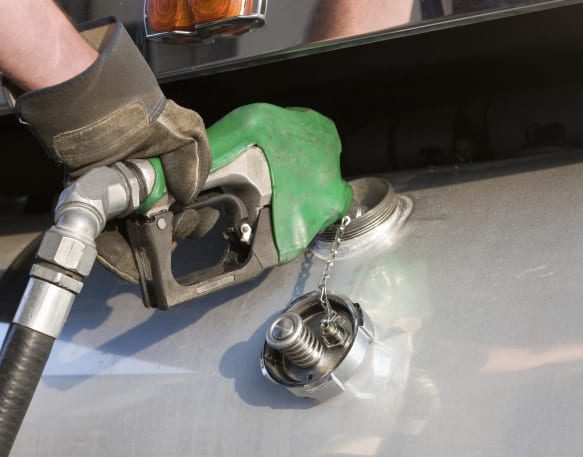
How to improve your motor carrier safety rating: Strategies and best practices
Issued by the Federal Motor Carrier Safety Administration (FMCSA), your Department of Transportation (DOT) safety rating reflects your adherence to safety standards, maintenance protocols, and other operational regulations. To build trust with current and future clients and protect your drivers on the road, you must prioritize safety and meet all DOT regulations. By paying attention to your MC safety score and taking action to raise it, you can set your business up for long-term success.
Your FMCSA safety score can pave the way to success
As a motor carrier, you need to pay close attention to your Department of Transportation (DOT) safety rating. Issued by the Federal Motor Carrier Safety Administration (FMCSA), this safety rating reflects carriers’ adherence to safety standards, maintenance protocols, and other operational regulations.
Your DOT safety rating is more than just a number—it’s key to keeping your carrier business competitive. Brokers and shippers prefer carriers with strong safety records, making a good FMCSA rating a valuable asset. On the other hand, a poor rating can hurt your reputation, create hesitation among clients, and even impact profitability.
Prioritizing safety and staying compliant with DOT regulations helps you build trust, protect your drivers, and set your business up for long-term success. Ultimately, think of a strong safety rating as an investment in a more profitable and sustainable future.
What is a motor carrier safety rating?
Ever wondered how your safety performance stacks up? That’s where motor carrier safety ratings come in.
The Federal Motor Carrier Safety Administration issues safety ratings to assess a carrier’s compliance with safety regulations. As part of the U.S. Department of Transportation, the FMCSA plays a key role in enforcing safety standards to help reduce accidents, injuries, and fatalities on the road.
A motor carrier safety rating reflects how well a carrier meets federal regulations in areas like vehicle maintenance, driver qualifications, drug and alcohol policies, and overall safety management. The FMCSA assigns carriers one of four safety ratings:
- Satisfactory: This is the highest rating the FMCSA gives out and indicates that a carrier has met or exceeded FMCSA safety standards. With a satisfactory rating, carriers are more attractive to potential clients and brokers because they are seen as safe and reliable.
- Conditional: This score is given to carriers that meet some safety standards but don’t have the right safety management controls in place needed to stay compliant. Operations won’t be shut down immediately, but, if changes aren’t made and things continue to slip, the carrier risks receiving an unsatisfactory rating, which could halt operations entirely.
- Unsatisfactory: An unsatisfactory rating demonstrates serious deficiencies. A carrier with an unsatisfactory rating has failed to comply with critical safety requirements and may not continue operations until they fix their issues and demonstrate compliance with the FMCSA’s standards. This can lead to a loss of clients, damaged reputation, and significant financial setbacks.
- Unrated: Finally, carriers listed with unrated have not yet been assigned a safety rating by the FMCSA. Generally, this applies to new carriers. While it isn’t inherently a bad thing to have an unrated safety rating, it can cause potential business partners and clients to hesitate, as many would prefer to work with carriers that have proven safety records.
Motor carrier safety ratings vs. CSA scores
Motor carrier safety ratings reflect a carrier’s commitment to safety and compliance, but they aren’t the only way the FMCSA evaluates carriers. The agency also uses CSA (Compliance, Safety, Accountability) scores, which differ from safety ratings in key ways.
The FMCSA assigns motor carrier safety ratings after conducting on-site audits. These ratings—satisfactory, conditional, unsatisfactory, or unrated—indicate a carrier’s overall compliance status.
CSA scores, on the other hand, provide real-time safety insights and can impact a carrier’s safety rating during an audit. As part of the FMCSA’s Compliance, Safety, and Accountability program, CSA scores help identify high-risk carriers and enforce safety standards.
To calculate these scores, the FMCSA tracks performance in seven key Behavior Analysis and Safety Improvement Categories (BASICs):
- Unsafe driving
- Crash history
- Hours-of-service compliance
- Vehicle maintenance
- Controlled substances and alcohol
- Hazardous materials compliance
- Driver fitness
High CSA scores can lead to fines, audits, and lost business opportunities.
Both CSA scores and motor carrier safety ratings impact a carrier’s reputation and compliance. CSA scores provide real-time safety insights, while safety ratings are based on audit results and can affect whether a carrier is allowed to operate.
Key compliance areas impacting your safety rating
When evaluating a carrier’s safety rating, the FMCSA focuses on several critical compliance areas that reflect the carrier’s commitment to safety and regulatory adherence. More specifically, they look at:
- Financial responsibility: Carriers must have the appropriate insurance coverage and demonstrate that they can cover liabilities in the event of accidents, damage, or other issues. Failure to meet financial responsibility requirements can lead to severe penalties, including a poor safety rating or suspension of operations.
- Driver qualification: It’s also important to only hire drivers that meet the FMCSA’s rigorous standards. Not only do they need to have the appropriate training and experience, but they also need to be in good health. Drivers will need to pass physical exams and demonstrate that they have good sight and hearing. Carriers will also need to maintain driver qualification files and be willing and able to produce them when the FMCSA demands.
- Vehicle maintenance: Carriers will need to make sure that all the vehicles in their fleet are properly maintained. Not only does this mean having thorough pre-trip and post-trip inspections, but it also requires having timely repairs if any vehicle issues or defects should occur. Carriers will also need to have thorough maintenance records on hand.
- Hours of Service compliance: Fatigued drivers are a danger to themselves and everyone else on the road, so carriers and their drivers must closely adhere to Hours of Service (HOS) regulations. Part of meeting FMCSA HOS compliance requirements means maintaining accurate electronic logging device (ELD) records. Non-compliance with HOS rules can lead to fines, violations, and a negative impact on the carrier’s safety rating.
- Drug and alcohol testing: Being under the influence of alcohol, illegal drugs, or certain over-the-counter or prescription drugs can significantly impair a driver’s ability to operate a commercial vehicle safely. That’s why carriers need to have a drug and alcohol testing program in place to ensure their drivers are adhering to FMCSA guidelines.
The right tools can make it easier to stay compliant and run your business more efficiently—while also helping improve your safety rating. A load board, for example, can help you quickly find the best loads, check real-time rates, and choose higher-paying routes. This not only reduces empty miles and optimizes your trips but also helps you stay within HOS regulations while keeping profits up.
Likewise, drug and alcohol testing services make it simple to meet FMCSA Clearinghouse requirements, avoid fines, and keep your team safe. With accurate testing and workforce training, you can stay compliant without the extra hassle.
Safety management controls
Keeping track of safety performance is key to staying compliant with FMCSA regulations and maintaining a strong safety rating. Carriers can use safety management systems to monitor important metrics like:
- Accident and incident rates: Regularly reviewing accident data helps carriers spot patterns and address potential safety risks. Tracking accident severity, causes, and corrective actions can reveal key trends. For example, if faulty brakes are a common issue, adjusting maintenance practices and providing additional driver training can help prevent future incidents. If accidents tend to happen on the same stretch of road during winter, rerouting drivers to avoid high-risk areas may be a smart solution.
- Out-of-service (OOS) rates: OOS violations happen when vehicles fail roadside inspections and are deemed unsafe to operate. These violations, often caused by mechanical issues or non-compliance with FMCSA regulations, can directly impact a carrier’s DOT safety rating. Monitoring OOS rates, regularly auditing vehicle inspections, and quickly addressing issues can help lower violation rates and keep fleets in top condition.
- Maintenance schedules: Regular vehicle maintenance is essential for meeting safety standards and reducing OOS violations. A strong safety management system should include tools for scheduling and tracking inspections, repairs, and routine maintenance. Not only does this improve safety ratings, but it also extends vehicle lifespan and ensures compliance during audits. Keeping accurate maintenance records is just as important, as they provide proof of compliance when needed.
- Driver performance and behavior: A carrier’s safety depends on more than just vehicle maintenance—it’s also about driver performance. Tracking compliance with HOS rules and monitoring behaviors like speeding, harsh braking, and distracted driving can help improve overall safety. Offering regular training programs and performance assessments ensures drivers stay sharp and follow safety policies.
The right technology can make fleet management easier while helping carriers stay compliant. Fuel cards can cut down on operational costs, while load tracking tools provide real-time shipment visibility to ensure on-time deliveries and reduce empty miles. Trusted mobile apps can also help drivers plan smarter routes, find truck stops, parking, and weigh stations, and stay on top of HOS requirements.
How to check your motor carrier safety rating
To check your motor carrier safety rating, you can use the FMCSA Safety and Fitness Electronic Records (SAFER) System. Just enter your USDOT number, MC/MX number, or company name, and you can view your safety rating as well as your safety record, roadside out-of-service inspection summary, crash information, and commodity information.
If you don’t have any compliance reviews yet, you may not have a safety rating. However, this doesn’t mean safety metrics don’t apply to you. Make sure to regularly monitor your performance data and train your drivers well so that your carrier business can meet the FMCSA’s expectations when you undergo your first compliance review.
You can also use the FMCSA’s Safety Measurement System (SMS) website to check your motor carrier safety and performance data. After typing in your carrier’s name or USDOT number or logging in, you can view the seven Behavior Analysis and Safety Improvement Categories. This will enable you to identify potential risks, address issues quickly, and ultimately improve your compliance standing and industry reputation over time.
Improving your motor carrier safety rating
If you want to maintain or improve your motor carrier safety rating, taking a proactive approach is essential. Staying committed to safety and compliance at every step can make a big difference. Here are some ways to boost your MC safety rating:
- Developing corrective action plans: If you receive a conditional or unsatisfactory rating, create a corrective action plan to efficiently address any issues. You will need to identify the root causes of your violations, carefully implement effective solutions, and document the corrective measures you took to demonstrate compliance to the FMCSA.
- Improving safety management practices: You can also establish robust safety protocols to improve your FMCSA safety score. For example, you might monitor driver performance to identify risky behaviors like speeding or harsh breaking. You could also conduct regular safety training to ensure all drivers are well-versed in compliance requirements and best practices.
- Investing in safety technologies: By using tools like ELDs, GPS trackers, and driver behavior monitoring systems, you can better ensure compliance with HOS rules and quickly correct unsafe driving practices.
- Adhering to regular maintenance schedules: To keep your fleet vehicles in peak condition, avoid OOS violations, and improve overall safety, you can implement preventive maintenance plans, promptly address inspection violations, and maintain detailed maintenance logs.
- Staying updated on FMCSA regulations: Regulatory requirements can change, so stay informed of the latest regulations. Regularly review FMCSA updates, participate in industry training, and make sure that all your drivers know the latest compliance standards.
- Getting support with regulatory compliance: Navigating FMCSA regulations can be complicated, especially for new carriers. Using compliance services can help you stay on top of federal and state permit requirements, set up the right safety management systems, and maintain compliance. Resources like online training and safety compliance kits can also provide valuable guidance to help you achieve and maintain a satisfactory safety rating.
Put safety first to find success
As a carrier, having a good FMCSA safety score isn’t simply about meeting government regulations—it can also impact your business’s success. A satisfactory DOT safety rating demonstrates your commitment to safety, making you stand out in the eyes of potential brokers and customers. On the other hand, a poor rating can lead to lost contracts, operational restrictions, and financial setbacks.
Share
Related Articles
FAQs
A few things you might be asking yourself
The Federal Motor Carrier Safety Administration (FMCSA) uses DOT safety ratings to evaluate carriers’ compliance with safety standards and regulations. A carrier’s federal motor carrier safety rating reflects their adherence to safety protocols and overall safety management.
A carrier’s safety rating can have a direct impact on their ability to build trust with brokers and clients and even secure contracts in the first place. So, it’s important to have a strong FMCSA safety score, as that signals reliability and safety, which can lead to more business opportunities.
The FMCSA assesses carrier adherence to safety standards like Hours of Service compliance, drug and alcohol testing, vehicle maintenance, and financial responsibility. The FMCSA then assigns the appropriate FMCSA safety score: Satisfactory, Conditional, Unsatisfactory, and Unrated.
Satisfactory is the highest rating and is given to carriers that have met or exceeded safety standards, while Conditional applies to carriers that meet some safety standards but don’t have all the safety management controls in place. Unsatisfactory ratings are given to carriers that have failed to comply with essential safety requirements and will halt carrier operations. Finally, Unrated is given to carriers that have not yet received a safety rating from the FMCSA.
Both motor carrier safety ratings and CSA (Compliance, Safety, Accountability) scores measure safety, but they do so in different ways. Safety ratings reflect overall compliance, while CSA scores provide ongoing insights into potential safety risks.
Safety ratings are assigned after on-site compliance reviews, and carriers can fall under four categories: Satisfactory, Conditional, Unsatisfactory, and Unrated. On the other hand, CSA scores are real-time assessments based on seven Behavior Analysis and Safety Improvement Categories (BASICs): unsafe driving, crash indicator, hours-of-service compliance, vehicle maintenance, controlled substances and alcohol, hazardous materials compliance, and driver fitness.
Finding your FMCSA safety score is easy with the Safety and Fitness Electronic Records System, or SAFER System. You can visit the SAFER website and search using your USDOT number, MC/MX number, or company name. Here, you will be able to find safety ratings, crash data, roadside inspection summaries, and more. You can find your company snapshot here.
You can also use the FMCSA’s Safety Measurement System (SMS) website for insights into your CSA score and the seven Behavior Analysis and Safety Improvement Categories. You can access the SMS website here.
DAT offers several tools and resources to help carriers improve their FMCSA safety score and safety as a whole throughout their operations. The DAT Copilot™ Authority Program can help you get your business started off the right foot by guiding you through the process of obtaining your federal and state permits as well as giving you a safety compliance kit to help you create systems to stay compliant with FMCSA regulations. The DAT One Load Board can help you find loads that meet your needs and route preferences, making it easier to adhere to HOS regulations, while CleanFleet will allow you to easily test drivers for alcohol and drugs. Additionally, DAT University can provide some tips to help you safely and successfully operate your carrier business.
Keep your carrier business safe and running smoothly with DAT!
Ready to improve your FMCSA safety rating and gain more trust with brokers and clients? DAT offers several tools that can help you stick to those FMCSA regulations.
By leveraging tools like the DAT One Load Board, CleanFleet, and The DAT Copilot™ Authority Program, you can optimize your operations while improving your safety rating and setting your carrier business up for long-term success. Get started with DAT today!




